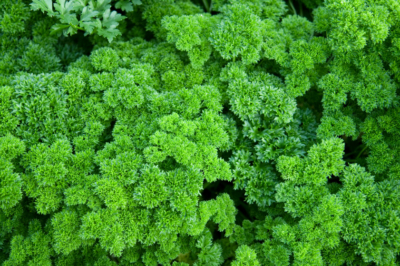To thrive, parsley requires an adequate supply of nutrients. Sow or plant the herbs in humus-rich soil, then harvest many branches of the aromatic seasoning herb in the open ground.

Create nutritious soil
Parsley does not thrive on a depleted soil. Also, if the soil is too acidic, it does not benefit the somewhat delicate herb.
- Humus garden soil
- Improve lean soil with mature compost
- Lime acidic soils
- Fertilize if necessary
- Improve soil with suitable fertilizer
Not every fertilizer is suitable for parsley. Fresh organic fertilizer does not suit it.
Use only mature, screened compost or well-seasoned manure. You can also improve the soil with horn shavings and horn meal.
Tips & Tricks
In addition to the soil, the right location also plays an important role. Parsley does not get along with itself. Therefore, plant it only on beds where no parsley has previously grown for at least three years.
Parsley is a popular herb known for its vibrant green leaves and fresh, earthy flavor. To grow healthy and flavorful parsley, you need to use the right type of soil. The best soil for growing parsley is well-draining, fertile, and slightly alkaline.
Here’s a breakdown of the key characteristics of the ideal soil for parsley:
1. Soil Type:
- Loamy Soil: Loam is a well-balanced soil type that combines equal parts of sand, silt, and clay. It provides good drainage while retaining essential moisture and nutrients.
2. pH Level:
- Slightly Alkaline: Parsley prefers a slightly alkaline soil with a pH level between 6.0 and 7.0. You can adjust the pH level by adding lime to make the soil more alkaline if needed.
3. Organic Matter:
- Rich in Organic Matter: Enrich the soil with organic matter like well-rotted compost or aged manure. This not only improves the soil structure but also provides essential nutrients for healthy parsley growth.
4. Drainage:
- Well-Draining: Parsley roots do not tolerate waterlogged conditions. Ensure that the soil drains well to prevent water accumulation that can lead to root rot. If your garden soil is heavy and poorly draining, consider raised beds or containers.
5. Nutrient Levels:
- Fertile Soil: Parsley benefits from a soil rich in essential nutrients, especially nitrogen. You can periodically fertilize your parsley with a balanced, all-purpose fertilizer to ensure it receives the nutrients it needs for robust growth.
6. Texture:
- Fine to Medium Texture: Parsley grows well in soil with a fine to medium texture. This allows for good root development and easy water and nutrient uptake.
7. Soil Preparation:
- Loosen Soil: Before planting parsley, loosen the soil to a depth of at least 8-10 inches. Remove any rocks, debris, or weeds that can hinder parsley growth.
8. Mulch:
- Mulch the Soil: Applying a layer of organic mulch, such as straw or shredded leaves, around your parsley plants helps conserve soil moisture, control weeds, and maintain an even soil temperature.
9. Container Gardening:
- Use a High-Quality Potting Mix: If you’re growing parsley in containers, use a high-quality potting mix specifically designed for herbs or vegetables. These mixes provide good drainage and aeration.
10. Crop Rotation: – Rotate Crops: To prevent soilborne diseases and pests, practice crop rotation. Avoid planting parsley in the same spot in consecutive years.
By ensuring that your parsley is planted in the right soil conditions, you can expect a bountiful harvest of this flavorful herb. Regular watering, proper spacing, and adequate sunlight are also essential factors to consider when growing parsley, along with providing the right soil conditions.

